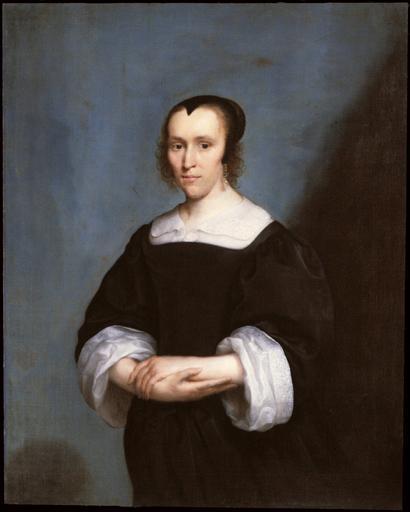MAKE A MEME
View Large Image

| View Original: | Van_Ceulen_I,_Cornelis_Jonson,_Portrait_of_a_Woman,_1655-56.jpg (1600x2000) | |||
| Download: | Original | Medium | Small | Thumb |
| Courtesy of: | commons.wikimedia.org | More Like This | ||
| Keywords: Van Ceulen I, Cornelis Jonson, Portrait of a Woman, 1655-56.jpg Artwork Creator Cornelis Janssens van Ceulen Catalogue Entry Cornelis Jonson van Ceulen who began his career as a portraitist in London was trained in England and in the Netherlands He would have been aware of Sir Anthony Van Dyck �s portraits of Charles I and his court painted in the elegant grand-manner conventions that Van Dyck brought from Italy; his own work for a wealthy clientele but not the highest aristocracy was conservative and followed English and Netherlandish traditions During the civil war commissions vanished and Jonson moved to the Netherlands in 1643 settling first in Middelburg then in Amsterdam and finally briefly in Utrecht After the execution of Charles I members of the Stuart family and supporters flowed into Europe bringing their taste for the Van Dyck style Jonson too adopted this more elevated manner of portraiture for his sitters practicing a painterly style with visible brushstrokes and elegant compositions His most accomplished portraits date from the 1650s when this portrait of a woman was painted Her severe black dress is relieved by the white collar and cuffs and Jonson �s preferred blue background The few touches of luxury fade in importance before her steady gaze and gracefully clasped hands This was the aim of the Calvinist prescription for black dress to subordinate worldly goods to a place of less importance than more lasting spiritual concerns Gallery Label During the seventeenth century the genre of portraiture became accessible to upper bourgeois patrons as never before Demand for Dutch-style portraits was particularly high in England where Jonsen van Ceulen painted hundreds of likenesses for individuals of an upwardly mobile clientele well-versed in Anthony van Dyck �s recent contributions to the local portrait tradition After 1643 Van Ceulen returned to the Netherlands where this work was likely made The woman �s clasped hands and modest demeanor reflect contemporary ideals of femininity while her jeweled earrings and the ornate lace trim of her dress imply her elevated social standing Although it appears custom-made the garment ultimately is not a marker of individuality Van Ceulen repeated it in at least four portraits of different women employing it as a prop in cases where the sitter may not have owned the richest and most up-to-date attire 1655-56 Oil on canvas Size cm 102 1 82 1 <br> frame Size cm 126 7 106 7 4 1 Institution Princeton University Art Museum European Art object history J C C D W de Mol and W J M Engelberts sale de Brakke Grond Amsterdam April 28 1875 lot 2; private collection Denver Colorado until 1982; sale Christie �s New York January 19 1982 lot 92 ; Marco and Cristina Grassi by 1984; gift to Princeton University Art Museum exhibition history credit line Gift of Marco Grassi Class of 1956 and Cristina Grassi accession number y1984-67 place of creation Princeton University Art Museum PD-old-100 1661 cite book Steward James Christen Princeton University Art Museum Handbook of the Collections Revised and Expanded Edition 2013 Princeton University Art Museum Princeton NJ 978-0943012414 2nd 200 cite web Portrait of a Woman y1984-67 http //artmuseum princeton edu/collections/objects/32771 Princeton University Art Museum European paintings in the Princeton University Art Museum 1655 Paintings in the Princeton University Art Museum 1655 European art in the Princeton University Art Museum 1655 Portraits in the Princeton University Art Museum 1655 17th-century portrait paintings in the Princeton University Art Museum 1655 European Portraits in the Princeton University Art Museum 1655 Dutch paintings in the Princeton University Art Museum 1655 Cornelis Janssens van Ceulen 17th-century oil portraits of standing women at full length 1650s paintings in the Netherlands Uploaded with UploadWizard | ||||